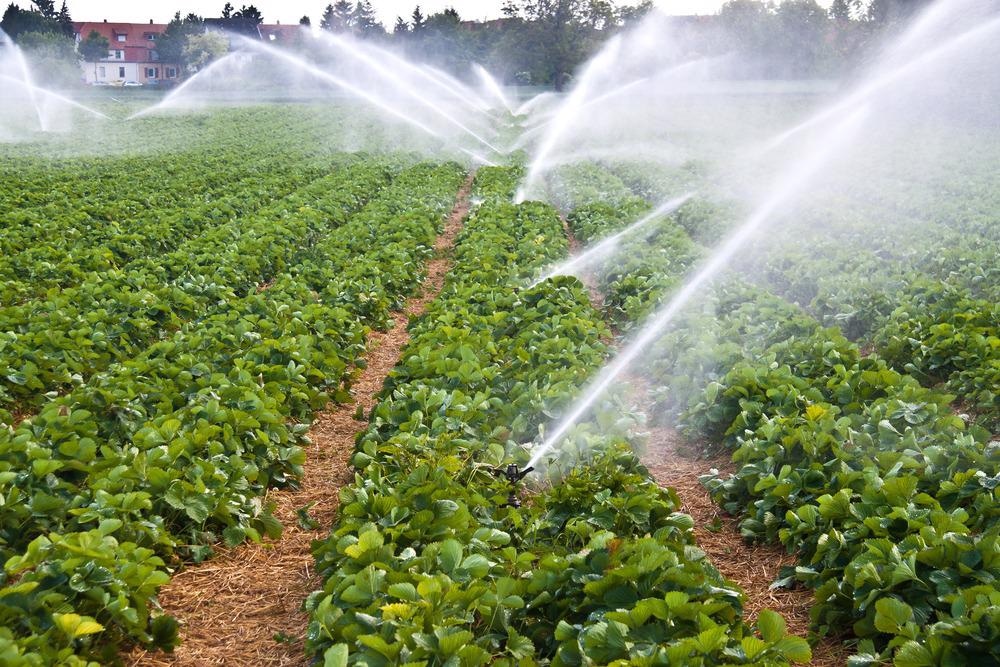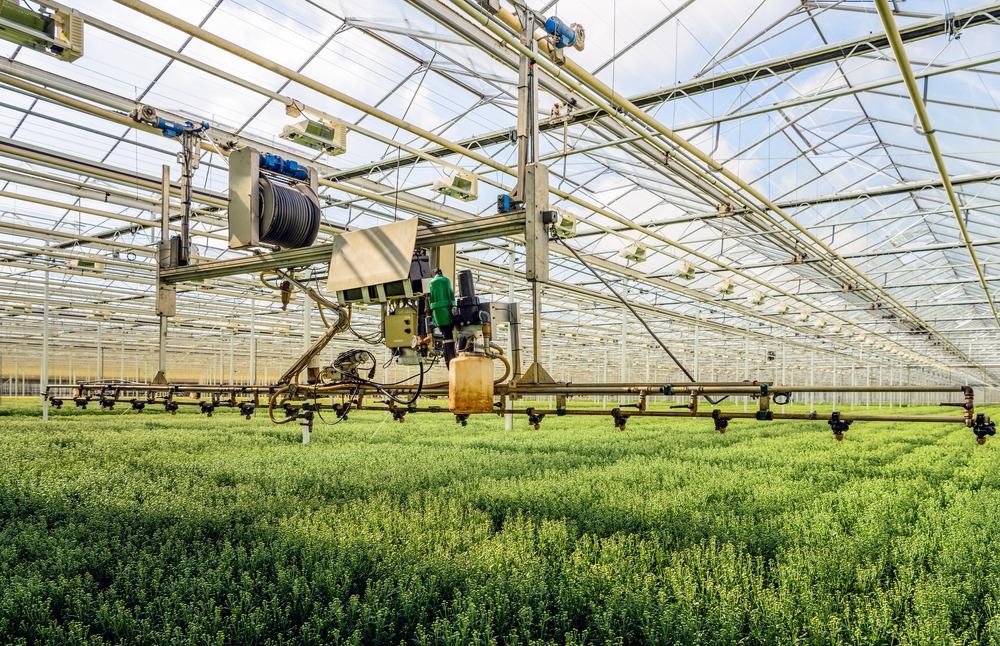Climate change is having a detrimental impact on the global water cycle. Rising temperatures are speeding up some stages due to increased rates of evaporation, which leads to increased precipitation rates. This heavier rainfall and faster evaporation are not evenly distributed across the globe, leaving some regions faced with more frequent and longer droughts. Others are becoming prone to heavy rain and floods.
Overall, this new variable water cycle leads to water supply inconsistencies, which is detrimental to crop growth. As a result, farms in some regions are experiencing agricultural drought, reducing levels of food security. Additionally, the rising atmospheric carbon dioxide levels synonymous with climate change are also disturbing growing seasons, further exacerbating food security issues.
Across the world, farmers are trying to grow crops in once-fertile land that, due to climate change, is slowly turning into deserts. Many farmers are turning to irrigation methods to moisten the soil. However, this often exacerbates the problem by negatively impacting the water cycle further due to excessive run-off.

Image Credit: Ulrich Mueller/Shutterstock.com
Impact of the Global Agricultural Sector on Water Resources
The relationship between agriculture and climate change is, in fact, two-directional. Some farming practices increase factors such as run-off and can increase the likeliness of both floods and droughts. Additionally, vast volumes of water are required for irrigated agriculture, a process that is at least twice as productive per square foot of land compared with agriculture that relies on rainwater.
Due to multiple factors such as population growth, changes in diets, urbanization, and climate change, scientists predict that we will need to increase global crop yields by at least 50% by 2050. With a huge demand for increased crop production, agriculture will be relying more heavily on limited water sources to irrigate the land. While the agricultural industry is adopting technology to increase efficiency and secure crop yields, it has mostly been used to develop machinery, pesticides, and fertilizers. Most of the increase in crop production that we have seen over the last century has been due to the use of greater spaces of land.
As land and water become heavily competed for, agriculture will have to respond differently to significantly increase crop yields to meet projections to meet the needs of rapid urbanization and the increasing population growth.
How can Robotic Irrigation Complexes Address Water Usage, Food Security, and Climate Change Issues?
To ensure that the agricultural sector evolves to be sustainable, artificial intelligence (AI) and the Internet of Things (IoT) must be leveraged to develop precision agriculture, where data is used to enhance crop volume and quality while allocating resources more efficiently. The agricultural sector is faced with the intertwined challenges of producing enough food to feed the world's growing population while reducing its usage of water.
Over recent years, innovations in AI and the IoT have been widely adopted by farmers to help them become more climate-friendly, improve the energy efficiency of their processes, produce better crop yields, and mitigate the impact of climate change. Robotic irrigation is one such technique that has already been implemented by farmers around the world.

Image Credit: Ruud Morjin Photographer/Shutterstock.com
Already, data has shown that AI-based solutions can enhance the quality and quantity of crop output, and by 2050, it is predicted that the average farm will be producing 4.1 million data points each day. Robotic irrigation solutions will likely be a cornerstone of this technology, with innovations such as "CASCADE" positioned to revolutionize the way farmers water their crops.
Farmers are aware of the limitations of current irrigation systems, mainly that they are unresponsive and often lead to overwatering. In their recent report, the IPCC highlight that meeting the target of limiting global warming to an increase of 1.5°C rather than 2°C, will require many adaptations in the agricultural industry. It is recommended that sustainable water management should be one of these measures.
CASCADE is a system that addresses the limitations of current irrigation systems. Using AI and the Internet of Things to execute precision agriculture whereby irrigation levels are adjusted to the specific needs of the crops at any given time. CASCADE is an intelligent irrigation system that has been developed to change the irrigation rate in response to data collected by sensors regarding the level of soil moisture in different areas of the field in real-time. Recent research has shown that CASCADE can reduce water use for irrigation by 7%.
The Future of Robotic Irrigation
The agriculture IoT market as a whole is predicted to proliferate, from $11.4 billion in 2021 to $18.1 billion by 2026. Robot irrigation solutions will likely be a vital part of this market due to their vital role in tackling climate change issues and the looming food crisis. With the IPCC's new report that highlights that adaptations are needed in the agricultural industry to reduce climate change, robotic irrigation could be one of many new tools that help to meet this goal.
--
Industrial Response to Climate Change
This article is a part of the IPCC Editorial Series: Industrial Response to Climate Change, a collection of content exploring how different sectors are responding to issues highlighted within the IPCC 2018 and 2021 reports. Here, Robotics showcases the research institutions, industrial organizations, and innovative technologies driving adaptive solutions to mitigate climate change.
References and Further Reading
IPCC. (2018) Summary for Policymakers. Global Warming of 1.5°C. An IPCC Special Report on the impacts of global warming of 1.5°C above pre-industrial levels and related global greenhouse gas emission pathways, in the context of strengthening the global response to the threat of climate change, sustainable development, and efforts to eradicate poverty. Available at: https://www.ipcc.ch/
IPCC. (2021) Summary for Policymakers. Climate Change 2021: The Physical Science Basis. Contribution of Working Group I to the Sixth Assessment Report of the Intergovernmental Panel on Climate. Available at: https://www.ipcc.ch/report/ar6/wg1/downloads/report/IPCC_AR6_WGI_SPM.pdf
Climate Reality. (2021) How Is Climate Change Impacting the Water Cycle?. [online] Available at: https://www.climaterealityproject.org/blog/climate-change-impacting-water-cycle
Byers, C. (2020) Find Electronic Components – Mouser Europe. [online] Mouser.com. Available at: https://www.mouser.com/blog/robotic-irrigation-reduces-farming-costs
Gusinow, S. (2021) Oregon Business - Robots on the Farm. [online] Oregonbusiness.com. Available at: https://www.oregonbusiness.com/article/farms-forests/item/19370-robots-on-the-farm
Soloviev, D., Zhuravleva, L. and Bakirov, S. (2020) Robotic Irrigative Complex with Intellectual Control System "CASCADE." Modern Trends in Agricultural Production in the World Economy,. [Online] Available at: https://web.archive.org/web/20200507154256id_/https:/scienceopen.ru/sites/default/files/ready_for_conference_proceeding_in_acs_style_soloviev.pdf
Talaviya, T., Shah, D., Patel, N., Yagnik, H. and Shah, M. (2020) Implementation of artificial intelligence in agriculture for optimisation of irrigation and application of pesticides and herbicides. Artificial Intelligence in Agriculture, 4, pp.58-73. https://doi.org/10.1016/j.aiia.2020.04.002
The World Bank. (2021) Water in Agriculture. [online] Available at: https://www.worldbank.org/en/topic/water-in-agriculture
Businesswire.com. (2021) $18 Bn Agriculture IoT Markets: Precision Farming, Precision Forestry, Precision Livestock, Precision Aquaculture, Smart Greenhouse - Global Forecast to 2026 - ResearchAndMarkets.com. [online] Available at: https://www.businesswire.com/news/home/20210817005557/en/18-Bn-Agriculture-IoT-Markets-Precision-Farming-Precision-Forestry-Precision-Livestock-Precision-Aquaculture-Smart-Greenhouse---Global-Forecast-to-2026---ResearchAndMarkets.com
Disclaimer: The views expressed here are those of the author expressed in their private capacity and do not necessarily represent the views of AZoM.com Limited T/A AZoNetwork the owner and operator of this website. This disclaimer forms part of the Terms and conditions of use of this website.